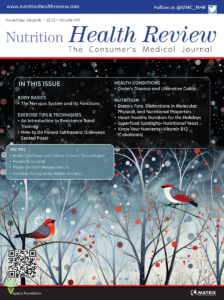Ever wonder about those food dates you see stamped on food packaging. For example, there’s “best if used-by/ before,” “sell-by,” “use-by,” “freeze- by,” and “expires by” (or sometimes just “exp”), followed by a day and a month, and, in many cases, also a year. What’s the difference between these terms? How reliable are these dates? How were these dates derived? You might be surprised to learn that motive behind these food product dates was not derived from safety concerns, but rather to guide consumers on the use/consumption of food while at its optimal freshness and quality. According to the United States Department of Agriculture (USDA) Food Safety and Inspection Service (FSIS) department, the above food product date descriptors are used to help customers and retailers determine the optimal time at which a food may be stored, purchased, consumed, and/or frozen for the best quality. Including food dates on food packaging is not required by law in the US, with the exception of infant formula (for which food product dates are required by law for safety measures). However, the FSIS requires food dates on food that falls under its jurisdiction. For eggs, meat, and poultry items under FSIS jurisdiction, the food product date should display a month and day, preceded by “best if used by [or before],” to establish a truthful period of time from date of purchase in which these food items are considered the freshest and at top quality. For shelf-stable and frozen food products under FSIS jurisdiction, manufacturers must display the year in addition to month and day (and provide the same wording).
Aside from the “best if used by” date, other food product dates imply somewhat different meanings and functions. The “sell-by” date is mainly for inventory management, suggesting the length of time a product should be displayed or stored. The straight-up “use-by” date indicates the last day a product can be consumed “while at peak quality,” and is only used as a safety precaution (e.g., for infant formula). Lastly, the “freeze-by” date suggests when a product should be placed in a freezer to maintain top quality of the product. Manufacturers institute these food product dates according to the following factors: food characteristics, type of packaging, and the period of time (and temperature) at which the food is held, displayed, and offered for sale.
From time of purchase, it is ultimately up to the consumer to examine and keep an eye on the quality of their food. Unfortunately, reliance on these dates, rather than assessing the condition of food, may result in prematurely disposing of food that is still safe for consumption. The USDA states it is safe to use, ingest, and/or donate foods past their product dates, as long as they are not showing signs of spoilage. Yeast, mold, or bacteria can form on certain foods if not handled or stored properly, too. Better understanding of how these food product dates are used can help reduce food waste and take away some of the pressure of rushing to clear out your fridge and cabinets of past- dated foods. If you’re concerned about food safety or have questions regarding how to properly handle and store food, visit the USDA site at www.usda.gov for more information.
SOURCE: The United States Department of Agriculture: Food Safety and Inspection Service site. Food Product Dating. Updated 2 Oct 2019. https://www.fsis. usda.gov/wps/portal/fsis/topics/food-safety-education/ get-answers/food-safety-fact-sheets/food-labeling/ food-product-dating/food-product-dating. Accessed 24 Nov 2020. NHR





